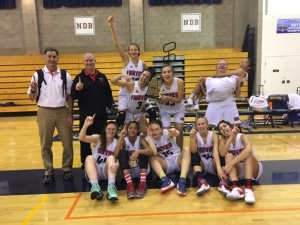BCH-CU Medicine School Partnership Helps Athletes
- Category: General, Cardiology, About Us
- Posted On:
- Written By: Boulder Community Health

The day before starting classes as a freshman at CU Boulder in August, Kelsey Webster, a member of the Women’s Golf team, went to a routine CU Athletic Department physical. By the time she walked out, she’d been diagnosed with a potentially life-threatening congenital heart defect.
Within about a week, the problem had been permanently addressed through a minimally invasive, catheter-led ablation procedure done by electrophysiologist Sameer Oza, MD, at Foothills Hospital.
“Kelsey was at a high risk for sudden death,” says Dr. Oza. “Outside this screening exam that we do for incoming CU athletes, it is unlikely that she would have been diagnosed.”
Sudden cardiac arrest (CSA) deaths among young athletes have garnered major public attention in recent years. Although the incidence is relatively low, recent studies show mortality rates from SCA among high school and college athletes are more common than previously estimated.
Thankfully, Kelsey’s story has a happy ending. Please watch our video, above.
The American Heart Association’s policy guidelines that athletic training and competition can increase the risk of sudden cardiac death in people with underlying heart disease. Still, advanced cardiac screenings are not a mandatory part of pre-participation exams for high school or college athletes.
However, facilities such as CU Boulder that are able to provide specialized testing to at-risk athletes--identified by family history or symptoms experienced during exercise--are already doing so.
The medical partnership between BCH and CU School of Medicine arose several years ago when Dr. Sourav Poddar, medical director and team physician for the University of Colorado Buffaloes, and Dr. Jamie Doucet, cardiologist at BCH’s Boulder Heart, began collaborating to provide cardiac screening to athletes. Boulder Heart colleagues also provide tests at on-campus pre-participation physicals, and quickly schedule appointments for student athletes when needed.
Fast facts: Sudden cardiac arrest (SCA) and death in young athletes
- Sudden cardiac death is the most common non-traumatic cause of death among college athletes, and 75 percent of college student-athlete sudden deaths occur during sports and exercise, according to the National Collegiate Athletic Association (NCAA).
- Risk for SCA in high school student athletes was more than three times that of non-athletes, a 2014 study by University of Washington researchers found.
 About half the sudden deaths from medical causes among NCAA student-athletes are cardiovascular-related, according to a 2011 study by the University of Washington in Seattle.
About half the sudden deaths from medical causes among NCAA student-athletes are cardiovascular-related, according to a 2011 study by the University of Washington in Seattle.- Hypertrophic cardiomyopathy (HCM) is the leading cardiovascular cause of SCD (36%) in young athletes. (HCM is a disease that causes thickening of the heart muscle.) The next leading cause is congenital coronary anomalies, such as Wolfe-Parkinson-White (WPW) syndrome that Kelsey had.
- Male teen athletes, especially African-Americans, have more than twice the risk for sudden CSA death than do female teen athletes.
- The average age when SCD occurs in young athletes is 17.5 years. Risk for SCD increases with age.
- More than two thirds of young athletes who die suddenly are basketball and football players (67%). Swimming, lacrosse and cross-country track teen athletes are also at higher risk.
Risk & prevention
Young athletes with the following risk factors have a greater risk of SCA:
- Family history of unexpected, unexplained sudden death in a young person
- Fainting (syncope) or seizure during exercise, excitement or when startled
- Consistent or unusual chest pain and/or shortness of breath during exercise.
Coaches are key to preventing SCA in young athletes. With careful screening, coaches can refer athletes at risk to a heart doctor.